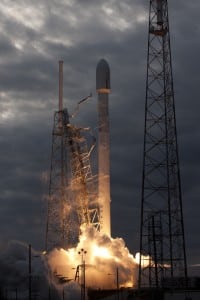
Space Exploration Technologies Corp. (SpaceX) wants to refly its Falcon 9v1.1 first stage sometime in 2015 if it is able to land the stage on land by the end of this year, company founder and CEO Elon Musk said Friday. SpaceX achieved a milestone April 18 by successfully “soft landing” the Falcon 9v1.1 first stage used in the company’s third Cargo Resupply Services (CRS) launch the same day. Musk said the stage landed vertically in the Atlantic Ocean and successfully…













